
Learning the Korean Alphabet: An Introduction to Hangul
Please keep in mind that some of the links in this post are affiliate links. In the event of a sale, I will be awarded a small commission (at no extra cost for you).
When learning the Korean language, one of the first steps is to learn the Korean alphabet. 한글 (Hangul, also spelled Hangeul) is one of the youngest alphabets in the world and is widely-respected by linguists for its logical construction.
Hangul consists of 24 letters, 10 vowels and 14 consonants, and is relatively simple to learn. Unlike Chinese and Japanese characters that are logographic, Hangul can be sounded out phonetically. This makes reading and writing a lot easier!
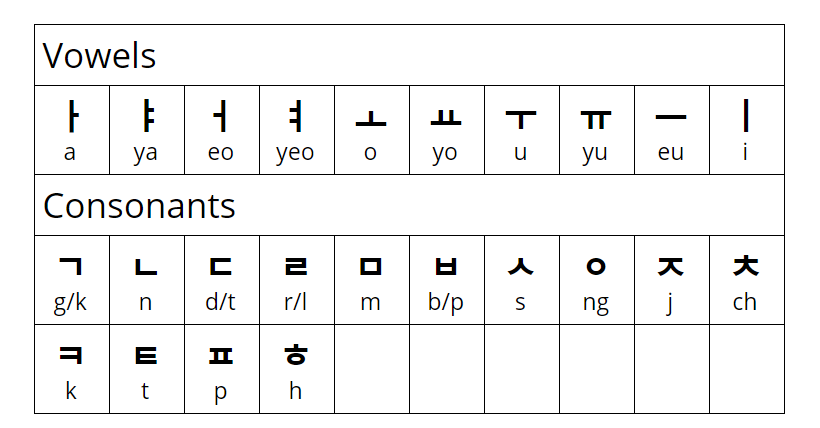
The basic Hangul vowels and consonants
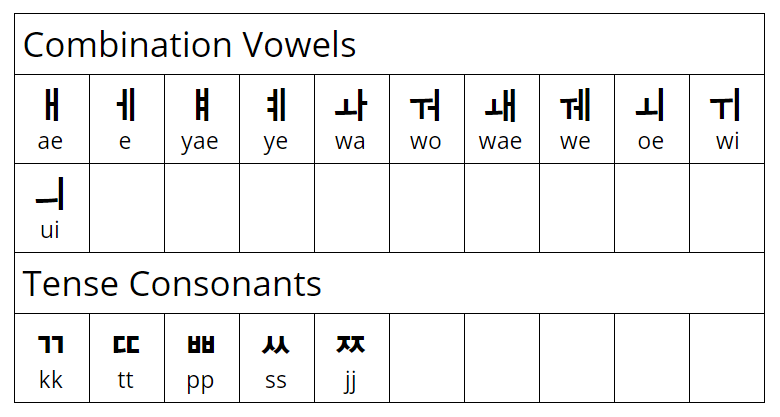
Here’s what you need to know about Hangul:
A brief history of Hangul
Hangul (meaning ‘Great Script’) was developed by King Sejong the Great, the fourth king of the Joseon period, in 1443. King Sejong wanted to establish an independent cultural identity for Korea through a unique writing system. With the help of a group of scholars, he created a simple alphabet of 28 letters (4 of which have since become obsolete) and proclaimed the Hunmin Jeong-eum (훈민정음, “the correct sounds for the instruction of the people”) in 1446.
Before the introduction of Hangul, the dominant writing system in Korea was Hanja (漢字; 한자) which was adapted from Chinese characters. Hanja was mostly used by the ruling class and bureaucrats, which meant that literacy was out of reach for many ordinary Korean citizens.
King Sejong’s invention of a logical, easy-to-master alphabet meant that more people could learn to read and write and the spread of information became much easier.
This did not go down well with some bearded old men who saw Hanja as the only legitimate writing system. As you can imagine, keeping the majority of people illiterate was a great way to maintain the status quo.
Since its inception, Hangul has been repressed on and off until Korea gained independence from Japanese colonial rule in 1945.
Today, Hangul is the official writing system of both South and North Korea (known as Chosŏn’gŭl there), although some language drift has occurred due to the long separation between the two countries. South Korea celebrates Hangul Day as a national holiday on October 9th.
How Hangul is written
Unlike English, where you write from left to right in a straight line, Hangul is written in syllabic blocks. This may sound complicated, but it is actually very logical.
Hangul characters are built by combining consonants and vowels.
- We always start with a consonant, followed by a vowel.
- Consonants and vowels cannot stand alone; they need to be combined.
- Each letter has a specific stroke order.
Hangul is made up of vertical and horizontal vowels. Vertical vowels are placed to the right of the consonant, while horizontal vowels are placed below the consonant.


Hangul characters do not always only consist of one vowel and one consonant. There are various different ways to combine consonants and vowels to form words. Let’s take a look at a few examples:
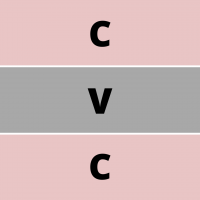
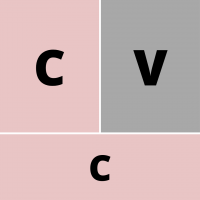
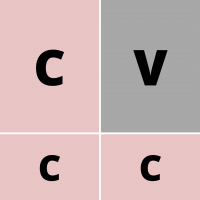
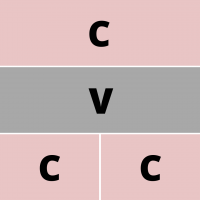
The final consonant in the above examples are called ‘batchim’ (받침). You’ll notice from the examples on the right hand side, that there is also a double final consonant, called a ‘gyeobbatchim’ (겹받침).
There are many ways to combine consonants and vowels, but don’t worry about it for now. You will learn it as you go along.
How to type in Hangul
While it is easy to set Korean as a language preference on your computer from your settings (find a useful link at the end of this section), the tricky part is getting to grips with the keyboard layout. Unless you bought your machine in Korea, your keyboard won’t have the Korean characters written on it.
You can memorize the keyboard layout, but if you need a bit of guidance, you can make your own stickers and paste them on your keyboard. Or you can buy stickers or a keyboard cover like the ones below.
90 Day Korean has an in-depth article on how to install the Korean keyboard and how to learn the layout effectively. Check it out here.
How to learn Hangul
Luckily, Hangul is very easy to learn because the shape of the characters supposedly correspond to the shape your mouth makes when producing the sounds. Some people claim that it is possible to learn the Korean alphabet in 2 hours or even 15 minutes. I’ll admit that it took me far longer than this, but I have not been a very dedicated student because Mandarin Chinese is still my main focus.
Here are some resources I used to learn Hangul:
Korean from Zero 1
This textbook offers a solid introduction to Hangul before moving on to some basic grammar and vocabulary. I have the Kindle version, but now wish I had a physical copy to complete the exercises properly.
90 Day Korean
90 Day Korean offers a free 90 Minute Challenge which uses visual associations to help you learn Hangul.
KoreanClass101 – Korean for Beginners Course
I bought this video course on Udemy. It consists of 100 video lessons, including ‘Hana Hana Hangul’, a step-by step introduction to Hangul. This course was very reasonably priced and the video lessons are short, making it easy to schedule bite-size learning sessions.
Talk to Me in Korean
Talk to me in Korean offers a wide range of textbooks, courses and resources. Become a Hangeul Master focuses on learning to read and write Korean characters. This book also includes a very useful section on Korean handwriting tips and different handwriting examples.
Check out this article for more about these resources.
Tips for learning Hangul
If you are struggling to remember characters, try using some mnemonics. For example:
ㄱ – Looks like a Gun
ㅎ – Looks like a person with a Hat on.
ㅁ – Looks like a Mouth
ㅗ – The vertical line is Over the horizontal line
ㅜ – The vertical line is Under the horizontal line
Tricky bits to watch out for
Batchim rules! Certain characters change their pronunciation when they are in the batchim position.
It can be a bit tricky to get to grips with these rules, but you will learn them naturally as you encounter more words and understand how to pronounce them.
The Hana Hana Hangul course has a very thorough explanation of these rules and you can also find an overview here.
Are you learning Hangul? What resources can you recommend?








3 Comments
Kiana
December 18, 2020 at 8:43 pm
This is so helpful! I hope to learn Korean after gaining fluency in Norwegian, so I’ll definitely be coming back to this post to look at the pronunciation charts! The tip about keyboard stickers for hangul characters is a gem, too!
Elzette
December 21, 2020 at 7:39 am
So glad you found it useful, Kiana! I have been following She’s Fluent. Love what you’re doing over there!
Khairah
February 1, 2021 at 3:02 pm
I find this helpful will be back soon
Comments are closed